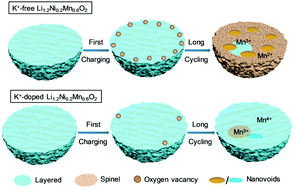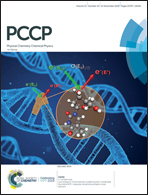Unveiling the benefits of potassium doping on the structural integrity of Li–Mn-rich layered oxides during prolonged cycling by dual-mode EPR spectroscopy†
Abstract
The oxygen redox process in Li- and Mn-rich layered oxides will inevitably lead to the generation of oxygen vacancies on the surface and their subsequent injection into the bulk lattice, which incurs poor kinetics, capacity decrease, and voltage fading. Herein, this predicament is effectively alleviated by bulk doping of K+, which is intrinsically stable in the lattice to inhibit the generation of oxygen vacancies in the deep delithiated state. More importantly, the benefits of K+ doping on the structural reversibility during prolonged cycling were studied by electron paramagnetic resonance (EPR) spectroscopy in both perpendicular and parallel polarization modes and high-resolution transmission electron microscopy. The results elucidate that the migration of transition-metal ions and oxygen vacancies and the reduction of Mn-ions are mitigated after K+ doping. Consequently, the growth of Li-poor nanovoids in the bulk lattice is greatly diminished and the structural transition from layered to spinel phases is effectively delayed.



 Please wait while we load your content...
Please wait while we load your content...